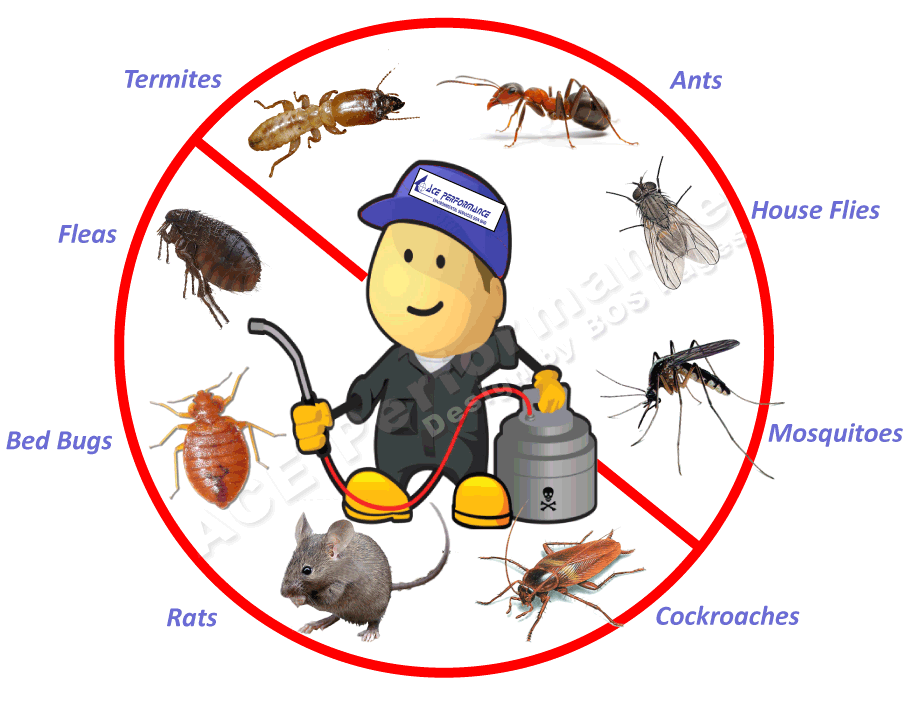Each homeowner knows the discomfort of discovering an uninvited pest inside their living space. Ranging from ants marching across the kitchen counter to the dreaded sightings of a roach scuttling quickly, these tiny intruders have a knack for transforming a peaceful home into a stressful environment. Understanding the psychology behind pest behavior can offer understanding into why infestations occur and how we can efficiently manage them.
Pests are motivated by fundamental instincts and requirements, seeking nourishment, shelter, and breeding grounds. While we delve into the complexities of these behaviors, we'll examine common residential pests and the most effective methods for maintaining them away. This manual will address everything from why do-it-yourself pest management often falls short to the times that it's best to bring in the professionals. With the right knowledge and preventive steps, you can maintain a pest-free space throughout the year.
Crucial Pest Control Tactics
To ensure a pest-free home, it is essential to implement a mix of proactive measures and reactive actions. Start by closing up Exterminator Queen Creek that pests may take to enter your home. Check window frames, entryways, and structural cracks for gaps and use caulk or weather stripping to protect them. Additionally, keep your home tidy by regularly cleaning areas where food might be accessible, as crumbs and spills can invite intrusive visitors.

In addition to sealing entry points, proper landscaping serves a critical role in pest control. Keep your garden tidy by cutting back bushes and shrubs that may shelter pests. Avoid growing flowers too close to your home, as they can serve as a gateway for insects to access. Using mulch in moderation and keeping it a few inches away from the base can reduce moisture and deter pests from nesting near your home.
Finally, consider scheduling regular pest inspections to detect infestations before they become serious. Professional pest control services can detect potential risks and recommend targeted treatments. Remaining proactive with these important strategies not only eliminates the threat of pests but also provides peace of mind, guaranteeing a safe and enjoyable living environment year-round.
Grasping Common Pests
Frequent household vermin can cause significant annoyance and possible health risks. Ants, for instance, are communal insects that can infest homes in pursuit of food. Once they locate a reliable food source, they leave pheromone trails that lure more ants, causing larger infestations. Proper diagnosis and disposal of food sources are crucial to manage these pests efficiently.
Additionally, another prevalent pest is the cockroach, infamous for flourishing in unsanitary conditions. They are drawn to warmth, moisture, and leftover food, making kitchens and bathrooms prime targets for infestations. Cockroaches can carry diseases, so it is important to remove their presence through tidiness and expert pest control when needed.
Bedbugs are hard to find pests that consume blood and often go unnoticed until a significant infestation occurs. They are frequently introduced through second-hand furniture or travel. To spot a bed bug problem, search for small brownish-red stains on sheets and bites on the skin. Efficient management requires a mixture of thorough cleaning, sealing obscured areas, and professional extermination to guarantee these pests do not come back.
Fallacies and Facts About Pest Management
Numerous property owners believe that every pests can be readily controlled with DIY solutions, resulting in the idea that expert pest control is superfluous. While some minor infestations can be dealt with at home, more serious infestations often necessitate expert knowledge and tools that experts possess. Self-help strategies may provide a temporary fix, but they seldom tackle the root of the problem, which can lead to repeated issues.
A further common fallacy is that all types of pest control methods are harmful to the ecosystem or animals. This is not true. Environmentally friendly pest control methods have gained popularity in the past few years, offering successful alternatives that preserve both your home and the world. Using natural pest control, such as natural oils or biological control agents, can be just as capable as traditional methods avoiding the associated risks.
Finally, numerous people think that upon a pest control treatment is done, their home will be pest-free indefinitely. This is a fallacy that can result in complacency. Routine inspections and preventive measures are crucial. Pests can reappear if their entry points are not secured or if sufficient sanitation measures are not upheld. Therefore, continuous vigilance and routine pest control treatments are necessary in maintaining a pest-free home.
